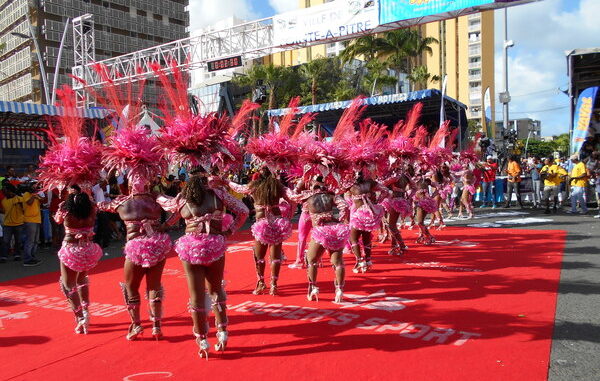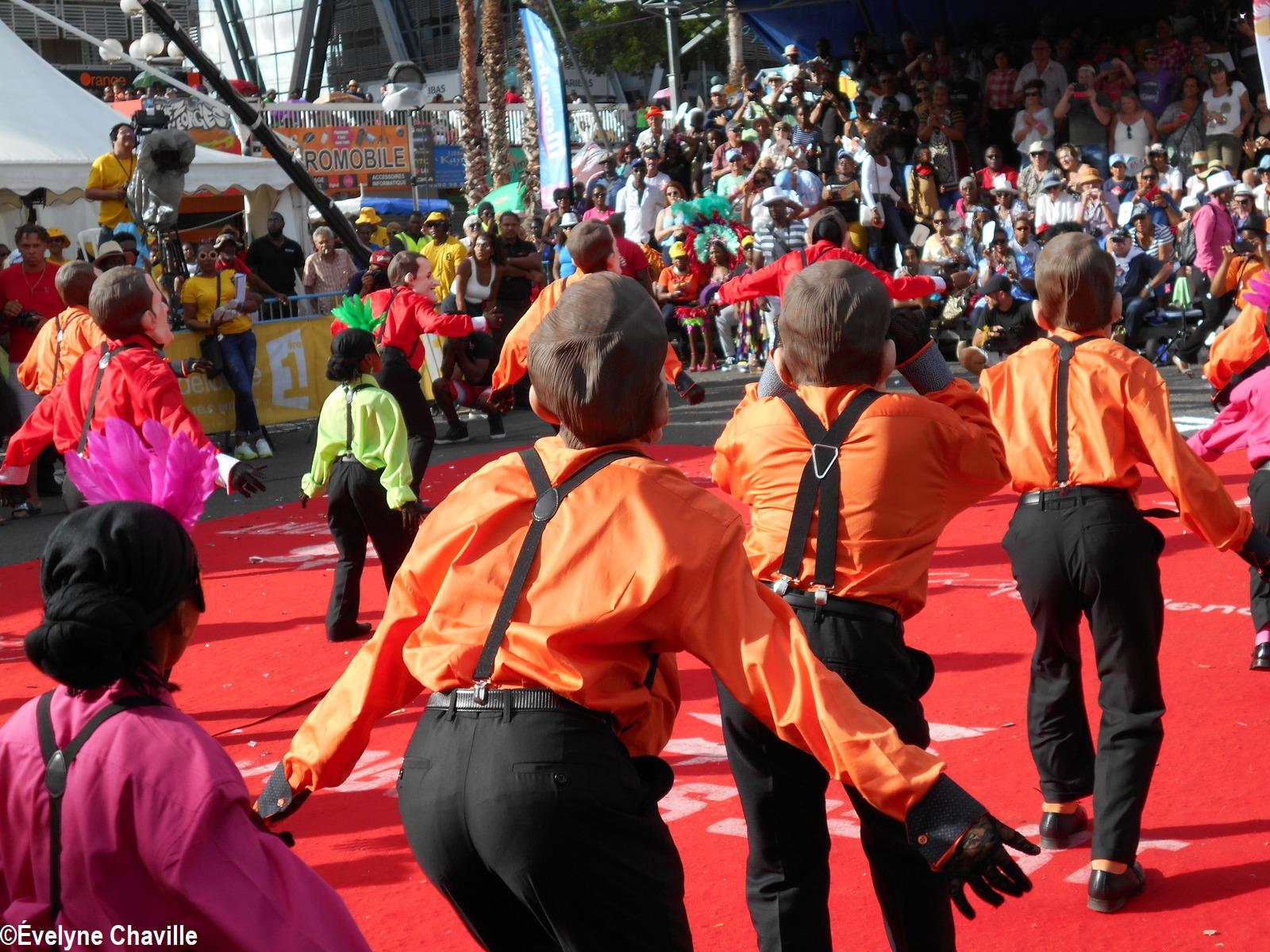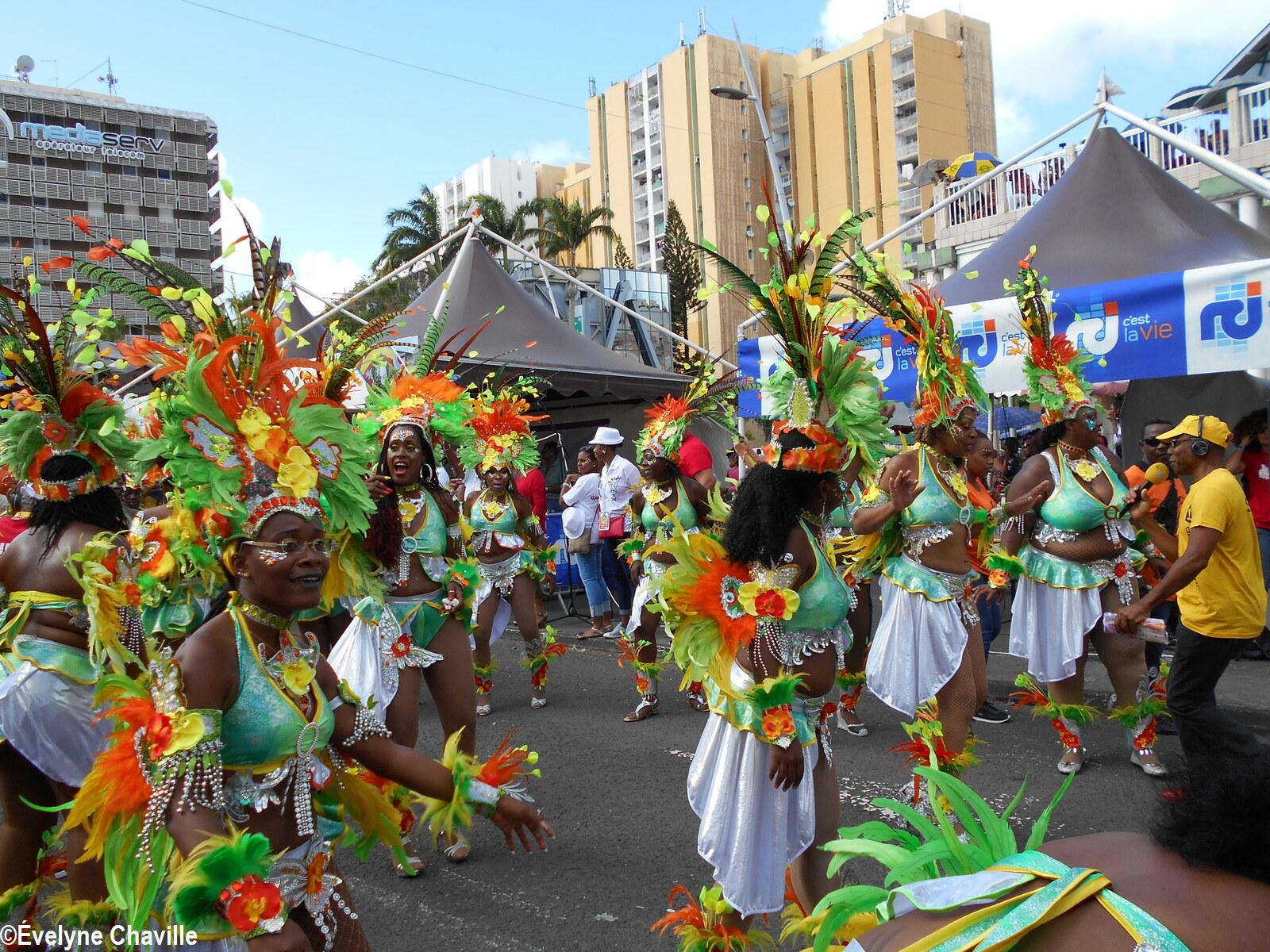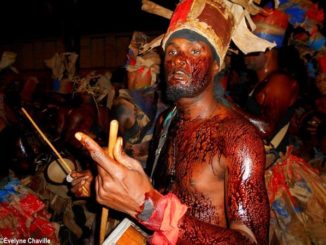
Carnival and the Guadeloupe International Cycling Tour are the archipelago’s two most popular events. “Popular” also means that anyone can attend, including all the media. Concerning carnival festivities, for about twenty years, the famous red carpet has appeared in the capital for the first time during the Mardi Gras parade. Because of this piece of carpet, many were quick to insult the inhabitants of Basse Terre, calling them “aristocrats”.
Since then, the famous “red carpet” is unanimous and is compulsory in all parades in Guadeloupe’s two major cities (Basse-Terre and Pointe-à-Pitre), as well as in the towns. In addition to the “red carpet”, this area provides paying stands and a “competition area” for groups.
You would think that all media have access to this famous “red carpet zone”, but NO! Kariculture, a young media outlet aged 2 at the time, went there on February 11, 2018 for the Dimanche Gras parade in Pointe-à-Pitre. We experienced some surreal scenes. Indeed, we saw both the presenters of a private radio station and those of the national-local radio and television station stand in front of our camera. At first, we thought this was due to the enthusiasm caused by the arrival of groups in this area. Then we realized that this insidious way of doing things was intended to block our shots and prevent us from obtaining “usable” images. In particular, we remember this singer, recruited by the local national television station, who took delight in passing or parking in front of us as soon as we shot a video…
The day after the parade, in the 7:00 am news on a private radio station, we heard one of the organizers of the Pointe-à-Pitre carnival declare that the “red carpet” area had been “polluted” by people who had come to take photos and videos… This February 12, 2018, we emailed him to find out what or rather who he was talking about. We did not get a reply. The following year, (February 25, 2019), we sent an e-mail to this Pointe-à-Pitre carnival organization to find out if, during the Dimanche Gras parade, measures would be taken to distinguish between press people and others, we received no response. However, during the “Kongo Karayib” parade on Saturday Gras 2019, we met the president of this organization at the Frébault Street entrance in Pointe-à-Pitre and asked him if the “red carpet zone” was open to all media the following day, Dimanche Gras. Embarrassed, he replied that this area was reserved for the “big” media. “Go to the start of the parade in Lauricisque and you’ll get photos that no one else will!”, he told us…

Since then, the situation has not changed and a lot of questions running through our heads.
By what right was the Guadeloupe Carnival “privatized” for the benefit of some “big” media, with the complicity of some organizers and elected officials?
How can “small” media be forbidden from working in the famous “red carpet zone”, when all the logistics (red carpet, bleachers, tables, chairs, barriers, marquees, electrical cables and plugs, lighting, flags, banners, posters, etc.) was installed with public money by municipal and community officials?
How is it possible, on a “small” island like Guadeloupe, to disguisedly forbid certain media from exercising their mission of informing?
Is public money invested in the Guadeloupe Carnival reserved exclusively for the “big” media, which allow certain local elected officials to take advantage of the large audience to “sell their sauce” in front of microphones and cameras?
If we “small” media cover carnival events out of professional duty or love for King Vaval, this is not entirely the case for the “big” media, and we ask ourselves: how much money do they earn during the carnival season, that is, from January to Ash Wednesday?
We cannot say that these “big” media invest much money in the organization of carnival by becoming “official sponsors”, supposedly essential to the promotion of our carnival. Some even sponsor a carnival group… crumbs of the cake.
In reality, by making this popular cultural event their “private property” – while the carnival lovers go into debt to make their costumes – these “big” media earn money in various ways:
income from advertising for products (drinks, etc.);
income from advertising for the promotion of parades by organizers;
income from advertising of local authorities, sponsors of parades;
and finally, substantial subsidies from local authorities – notably the Regional Council of Guadeloupe and agglomeration authorities such as Cap Excellence – to broadcast the parades live on television, radio and the Internet.
Moreover, since the advent of the Internet, our leaders think that, thanks to this broadcast, the whole world is waiting for and watching our carnival. This is a lie. In fact, the vast majority of Internet users connected to the Dimanche Gras parade in Pointe-à-Pitre and the Mardi Gras parade in Basse-Terre are Guadeloupeans living in France and elsewhere. Just read the messages they send… In fact, this “global broadcast” doesn’t attract any foreign tourists, but this illusion allows some of them to make money.
For its part, kariculture (published in French, English and Spanish) is not a “big” media outlet, but since its creation it has made a major contribution to making known Guadeloupe carnival in the Caribbean and the rest of the world. Once again this year, the various carnival programs of the Caribbean islands were widely browsed by our readers.




